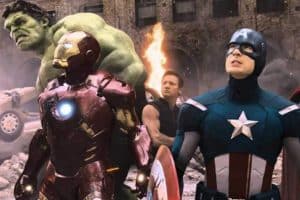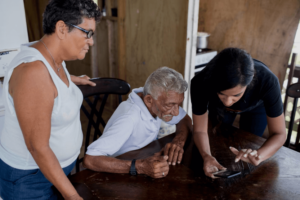The idea of a blue raspberry was designed to capture the imagination and attract the attention of people. This idea was so successful that it became a permanent fixture in the world of candies, gums, ice creams, beverages, and other tasty treats. But are blue raspberries real?
Blue raspberries are not real. There is no truth about the blue raspberry, as there is no truth about purple pineapple or red banana. The blue raspberry flavor is not a product of nature but a product invented in a laboratory.
While there are “blue raspberry” candies and drinks with natural flavors, they don’t have an authentic raspberry taste.
The real color of raspberries is deep, pinkish red. Therefore, there are no blue raspberries in nature, delightful as they can be. The blue color of blue raspberry food products is due to the dye used in making them. The fruity flavor is added to make them delectable and good to the taste.
Read on to learn more about blue raspberry flavoring, how it is made, and other things about them that you may not know.
Blue Raspberries – Are They Real?
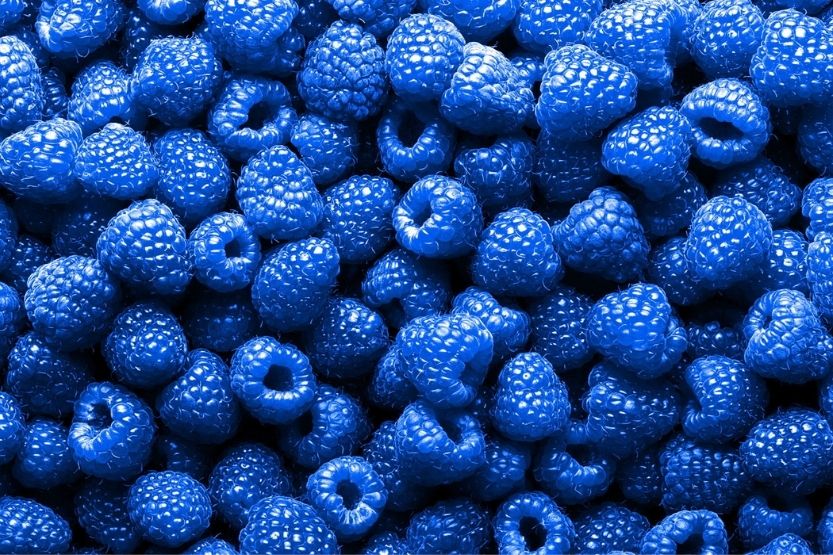
The fact is all raspberries are red, precisely deep, pinkish red. Therefore, blue raspberries, or rather the blue raspberry flavor, are not a product of nature but of a lab – to satisfy a certain need. The perceived need was influenced by the need to diversify.
You see, before blue raspberries appeared, the sweet market was populated by mostly red-flavored products. The market was saturated with red cranberries, red watermelons, red apples, and red strawberries that somebody thought they needed blue food products.
It is rare to find natural foods with blue colors, and there were so many red products in the market. They logically thought of changing the classic raspberry from red to blue to make it unique and attractive to consumers.
Any blue raspberry product that you can find, even those with natural flavors, won’t have a real raspberry taste. Less expensive juices, such as oranges and flavors, are typically used to provide their tastes.
Are blue raspberries real? Blue raspberries are not real. The blue raspberry flavor, found in many food products, is a food invention made in a lab. If there are actual berries used in the product, it will have a tart taste with a blackberry texture. It is not real raspberries that provide the flavor.
Origin of Blue Raspberries
Where blue raspberries came from is a complex story. Its history involves popsicles, synthetic color dyes, and a unique berry with a difficult name to pronounce. The original blue raspberries did not grow and were not harvested from a farm. They were created in a laboratory.
It all began when ice pop makers had plenty of red flavors that had shades of red dye. They have so many red-colored flavors like watermelon, strawberry, raspberry, and cherry. Kids then have a hard time making up their minds which red ice pop to choose.
Italian Raspberry-Flavored Ice Pops
Gold Medal, a family-run company based in Cincinnati, made Italian raspberry-flavored ice pops, realized in the 1950s that there were just too many red popsicles in the market. Cherry and strawberry were the well-established flavors.
The story said they believed it was not wise to add another red flavor to compete with the two mainstays because that would confuse their market. But they don’t have blue-colored ice pop flavors.
Blue Dye
Originally, raspberry popsicles used a coloring dye called FDC&C Red No. 2. Its color is dark red. This dye was found out later to be a carcinogen. So, the FDA banned it. Later, ice pop makers discovered the FD&C Blue No. 1 dye just lying on their shelves. The color of this dye is a brilliant blue.
They used the dye in place of the original red dye, which the FDA banned. Thus, the blue raspberry was born.
The ice pop makers mimicked the taste of Rubus leucodermis, more commonly known as blackcap raspberry, and put it in their blue raspberries. This natural plant is a wild berry that most people have never eaten or tasted, or even seen.
The color they used to produce blue raspberry products is called Brilliant Blue FCF. It is a colorant developed during the popularity of familial additives such as Red No. 3.
Blue Raspberries Craze
This colorant is not exclusively used for food products for kids. They are also used in the production of other non-food consumer items.
It was not until the 1970s that the blue raspberries craze took off. Their popularity was spurred by creating flavored treats with blue colors such as ICEEs and Otter Pops. The psychological effects of blue and how it affects the perception of flavor may also have played a part in this.
Are Blue Raspberries Based on Nature?
The blue raspberry flavor is based on nature. There is something in nature that is called blue raspberry. The name is Whitebark raspberry, a plant found in North America, particularly in the west of the Rockies, ranging from Mexico to Alaska.
However, it is rare plant species. It produces berries that appear blue at times, purple at other times, and sometimes in between. This berry’s color is nowhere near the brilliant blue color that candy makers have presented to consumers.
The raspberries of this Whitebark plant have blue-black colors. That is why they are also called black cap berries. They also manifest an indigo/deep purple color, which may have influenced the ‘blue raspberry’ name.
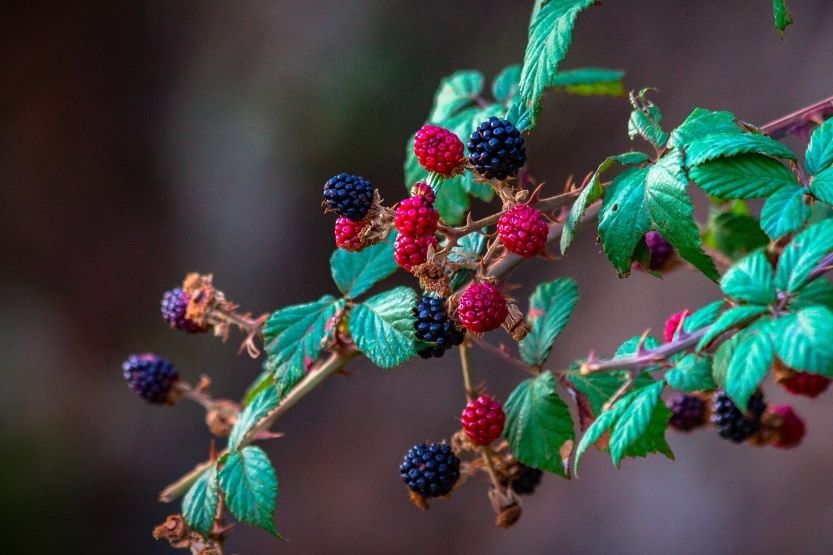
Candy and ice pop makers began adding blue dyes to their Whitebark raspberry flavored products in the 1960s and the 1970s. This was the time when commercial ice-pops became popular in middle-class America.
As a crucial marketing strategy, these ice pops were wrapped in thin and clear plastic tubes with the right color. The ice pop makers have to distinguish this new product from the red-colored bunch.
They first thought of adding a cheap, Amaranth deep red dye. But it caused harmful reactions, so it was discontinued.
The manufacturers found that they already have a good alternative on their shelves. This is a bright blue dye they used for other products. They have not used it for food flavoring since no “fruit” is needed for this dye.
Since it was there and no other flavor has claimed it yet, the dye was added to the items with Whitebark raspberry flavor.
Are there blue raspberries? There are no natural blue raspberries. There is no truth about the blue raspberry, as there is no truth about a red banana. It is not a product of nature but a product invented in a lab.
History Behind the Flavor
In the 1950s, concerns were brought up regarding the safety of FD&C (Food, Drug and Cosmetic Act of 1938) Red No. 2, a food additive. This substance contains a red wine color used to represent food products that are raspberry flavored.
It was suspected that this dye was potentially harmful. There was no definite research that proved this theory. However, questions remain unanswered to this day about this questionable food dye.
Additives Amendment
Then in 1958, the federal government enacted the Additives Amendment. It banned the use of known carcinogens as food additives. The ban includes other additives that have not been fully tested regarding their safe use and health risks.
Eventually, this temporary setback resulted in the resurgence of the additives and food coloring industry. They are getting more regulated and thus safer. Fruity and vibrantly colored flavors are being introduced in broader applications.
ICEE’s Blue Raspberry Flavor
Then ICEE launched its version of the bright blue raspberry flavor in the early 70s. ICEE is a snack food company owned by J&J Snack Foods Corp. It produces nutritional but affordable beverages and niche snack foods.
The ICEE blue raspberry flavor began popping up beside its well-known sibling, the classic ICEE cherry.
Susan Woods, ICEE Vice President of Marketing, said they came up with the blue raspberry flavor. They created it to be distinctly different from their flagship flavor, which is cherry.
It tasted great as a frozen beverage. Its color was strongly influenced by the blue color of the ICEE brand, she added.
She referred to the FC&C Blue No. 1, an intense electric blue color. It was permanently listed for food and ingested drug use by the FDA in 1969. Regarding its actual flavor, she said there is a reason why its taste is not exactly like the fruit it was named after.
According to Jerry Bowman, Flavor & Extract Manufacturers Association of the United States executive director, the flavor was actually created using primarily pineapple, cherry, and banana esters.
It contains a different dye that produces electric blue color that nearly everybody loves. This flavor has captured the taste buds of millions of people. Over 132 million blue raspberry ICEEs of the 16-ounce size are sold each year.
What Does Blue Raspberry Taste Like?
The natural flavor of Rubus leucodermis or Whitebark is unbelievably expensive. It is not a blue raspberry, and its fruits have dark purple colors. Its exorbitant cost prohibits its use on candies, soft drinks, and other sweeties.
In other words, the blue raspberry flavor is almost always simulated and artificial, much like its simulated blue color.
The food coloring of food items with blue raspberry flavors is usually bright blue. It is the Brilliant Blue FCF food coloring that is commonly used. However, this color does not accurately represent the real color of the fruit. When ripe, the actual color of the fruit has a black hue.
The first blue raspberry flavor that Gold Medal used in 1958 was for their Italian ice. By nature, raspberries are actually tart berries. When food manufacturers place ‘blue’ before ‘raspberry,’ they would like you to believe that the flavor will be a strong version of its already tart taste.
Therefore, if you buy a blue raspberry food item, you can expect a tart or sour flavor, a taste overtone of the raspberry, with the word blue related to candies and sour added as the flavor profile.
Why Does Blueberry Raspberry Become a Hit?
Other food and beverage companies launched their own versions of blue raspberry food and snack items as time went on. There is a reason why consumers accepted blueberry raspberry products. It is the psychological meaning of blue.
According to Michele Trent, a key account manager at Gold Coast Ingredients, if people see blue-colored beverage products, they expect to taste blueberry or blue raspberry. It is just the same as if they picked a green drink, expecting to taste the green apple.
Makers of consumer drinks, candies, and similar food products use this psychology in promoting their products to consumers. The color blue is not associated with the desire to eat.
It is actually used in products that suppress appetite. It is believed that there are very few natural foods that have blue colors, so the hunger section in our brain is turned off when it sees blue.
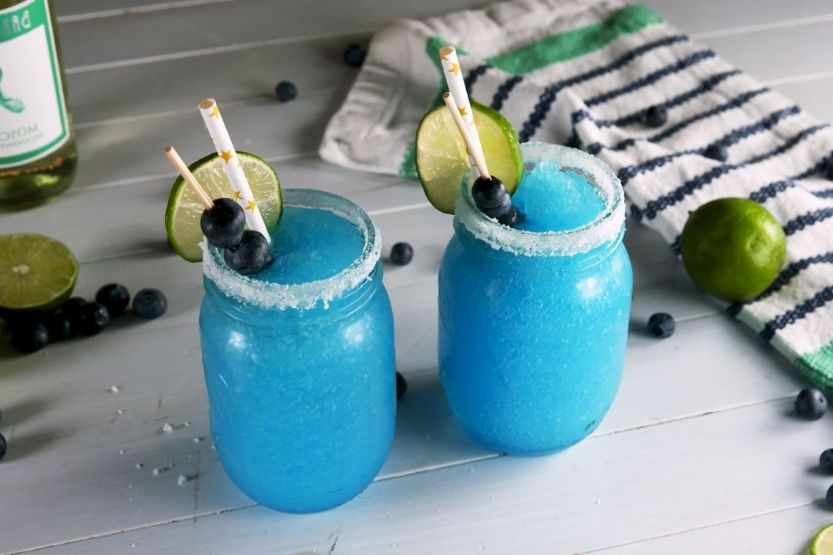
However, when it is a hot day and you are terribly thirsty, your brain influences your eyes to take the blue-colored drink instead of a red, white, or brown-colored drink.
An iced drink of blue-colored liquid makes your brain think of the blue ocean waters or the cool waters in a swimming pool with the blue-colored floor.
The same thing goes with candies and other sweet treats. Children love blue candies and pop very much. This could explain why blue raspberries became a hit with consumers even if there are no real-life blue raspberries.
Different Blue Raspberry Food Products
Do blue raspberries exist? Technically, blue raspberries do not exist. However, they do exist in the variety of food and beverage products that consumers are patronizing. They are now available as:
- Fruit snacks
- Candies
- Beverages
- Sports drinks
- Ice Pops
- Sports drinks
- Mild alcoholic drinks (such as a few flavored vodkas)
Indeed, though they may not be real, blue raspberries are more than real in the eyes and palates of many consumers.
Conclusion: Blue Raspberries – Are They Real?
There are no such things as blue raspberries, just like there are no purple pineapples or red bananas. Nature did not produce the blue raspberry or the blue raspberry flavor. It was a product of a lab, not from a farmer.
There are blue raspberry products such as:
- Gums,
- Candies,
- Ice creams,
- Popsicles,
- Mild alcoholic beverages, and so forth.
But they really don’t have a genuine raspberry taste.
Read next:


